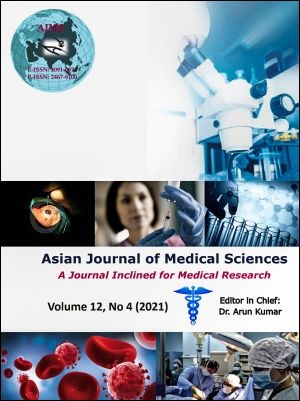Persistent left superior vena cava and its clinical correlation - A cadaveric study
Keywords:
Persistent left superior vena cava, Coronary sinus, Superior vena cava, Right atriumAbstract
Background: Presented is a case of persistent left superior vena cava draining into the right atrium through coronary sinus and finally opens into right atrium. Abnormalities of the vascular system are more commonly seen due to its importance in circulation. Persistent left superior vena cava is rare but important congenital vascular anomaly. It results when the left superior cardinal vein caudal to the innominate vein fails to regress.
The venous anomaly of a persistent left superior vena cava (PLSVC) affects 0.3%–0.5% of the general population. Normally the superior vena cava is a single vascular structure formed by the union of right and left brachiocephalic veins which are in turn formed by the union of internal jugular and subclavian veins of corresponding side, draining the head and neck as well as the superior extremity.
Aims and Objective: To evaluate the accuracy of persistent left superior vena cava and to find out the opening of PLSVC and formations of both SVC.
Materials and Methods: During routine dissection of Thorax, we have opened the thoracic cage and take out the Heart. during that we found separate SVC and then we did the study on this PLSVC in the Department of Anatomy, Jaipur National University Institute for Medical Sciences and Research Centre (JNUIMSRC) Jaipur and National Institute of Medical Sciences and Research (NIMS & R).
Results: We found persistent left superior vena cava in two cadavers out of 30 cadavers (6.66%) one was 64-year-old male cadaver and another 72-year-old male cadaver. Both the vena cavae were formed as of brachiocephalic veins of the corresponding side. The persistent left superior vena cava opened into the enlarged coronary sinus that drained into the right atrium between the opening of inferior vena cava and right atrio-ventricular orifice.
Conclusion: It has important clinical implications in certain clinical interventions. It may complicate placement
of cardiac catheters or pacemaker leads.
Downloads
Downloads
Published
How to Cite
Issue
Section
License
Authors who publish with this journal agree to the following terms:
- The journal holds copyright and publishes the work under a Creative Commons CC-BY-NC license that permits use, distribution and reprduction in any medium, provided the original work is properly cited and is not used for commercial purposes. The journal should be recognised as the original publisher of this work.
- Authors are able to enter into separate, additional contractual arrangements for the non-exclusive distribution of the journal's published version of the work (e.g., post it to an institutional repository or publish it in a book), with an acknowledgement of its initial publication in this journal.
- Authors are permitted and encouraged to post their work online (e.g., in institutional repositories or on their website) prior to and during the submission process, as it can lead to productive exchanges, as well as earlier and greater citation of published work (See The Effect of Open Access).




